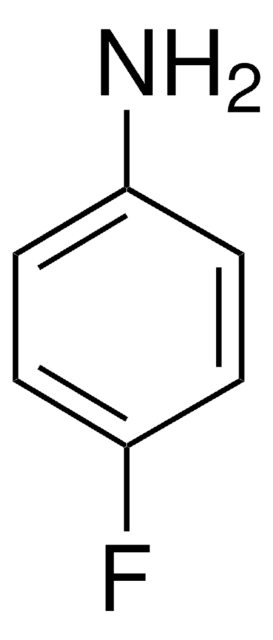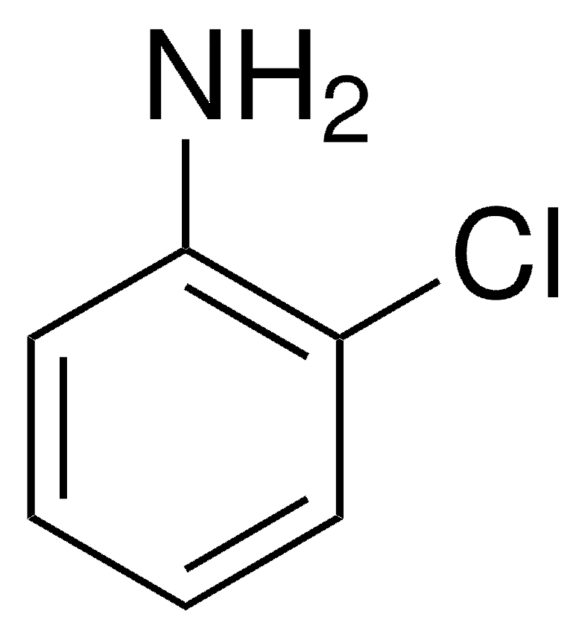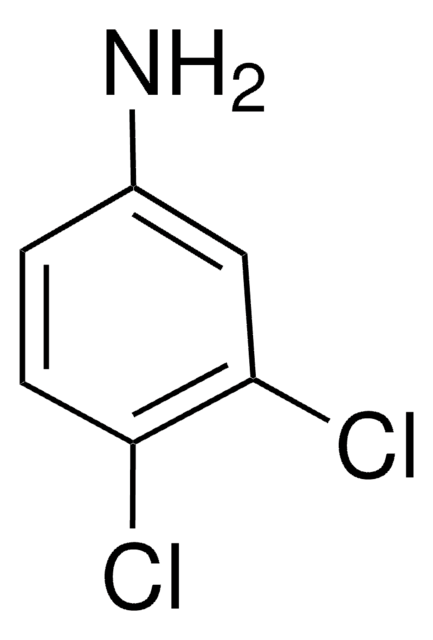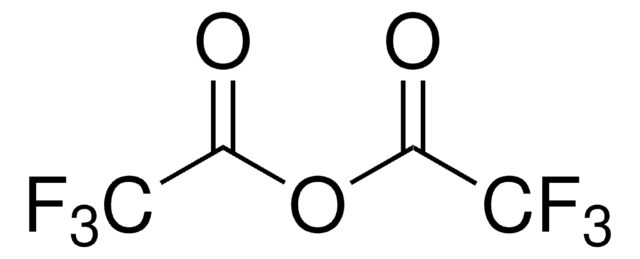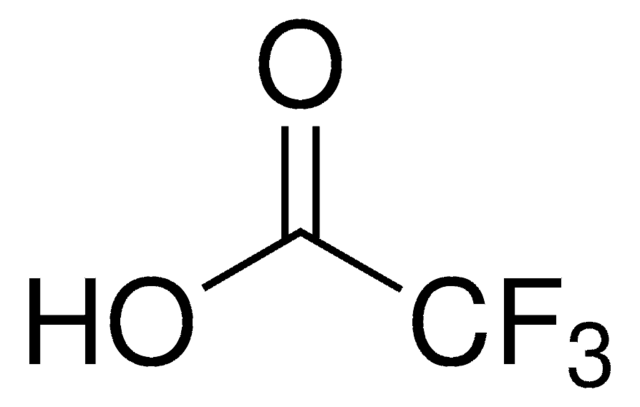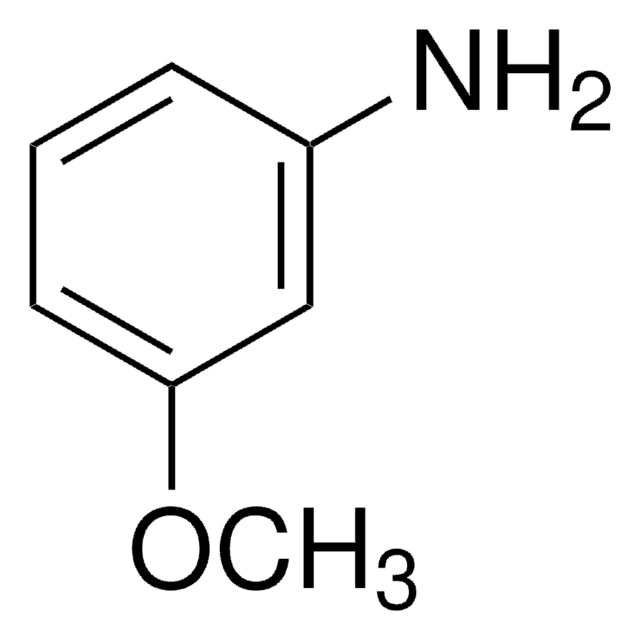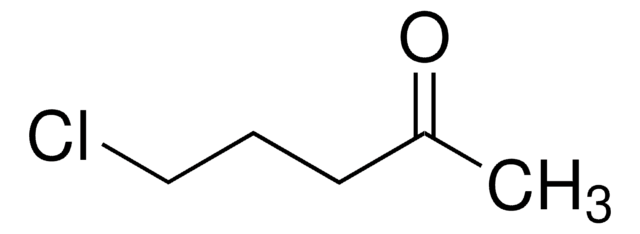Wichtige Dokumente
C22407
3-Chloranilin
99%
Synonym(e):
1-Amino-3-chlorobenzene, 3-Amino-1-chlorobenzene, 3-Chloro-1-aminobenzene, 3-Chlorobenzenamine, 3-Chlorophenylamine, 5-Chloroaniline, m-Aminochlorobenzene, m-Chloroaniline, m-Chlorophenylamine
About This Item
Empfohlene Produkte
Dampfdruck
1 mmHg ( 63.5 °C)
Qualitätsniveau
Assay
99%
Form
liquid
Brechungsindex
n20/D 1.594 (lit.)
bp
95-96 °C/11 mmHg (lit.)
mp (Schmelzpunkt)
−11-−9 °C (lit.)
Dichte
1.206 g/mL at 25 °C (lit.)
SMILES String
Nc1cccc(Cl)c1
InChI
1S/C6H6ClN/c7-5-2-1-3-6(8)4-5/h1-4H,8H2
InChIKey
PNPCRKVUWYDDST-UHFFFAOYSA-N
Suchen Sie nach ähnlichen Produkten? Aufrufen Leitfaden zum Produktvergleich
Verwandte Kategorien
Anwendung
- Elevated level of the second messenger c-di-GMP in Comamonas testosteroni enhances biofilm formation and biofilm-based biodegradation of 3-chloroaniline.: This research reveals that increased levels of c-di-GMP in Comamonas testosteroni enhance both biofilm formation and the biodegradation efficiency of 3-chloroaniline, suggesting a strategy to improve bioremediation processes (Wu et al., 2015).
- Degradation of chloroanilines by toluene dioxygenase from Pseudomonas putida T57.: The study investigates the role of toluene dioxygenase from Pseudomonas putida T57 in degrading chloroanilines, providing insights into the enzymatic mechanisms and potential applications in treating chloroaniline pollutants (Nitisakulkan et al., 2014).
- Bioaugmentation as a tool to protect the structure and function of an activated-sludge microbial community against a 3-chloroaniline shock load.: The study evaluates the effectiveness of bioaugmentation in maintaining the stability and functionality of microbial communities in activated sludge systems exposed to 3-chloroaniline, supporting its application in wastewater treatment (Boon et al., 2003).
Signalwort
Danger
Gefahreneinstufungen
Acute Tox. 2 Inhalation - Acute Tox. 3 Dermal - Acute Tox. 3 Oral - Aquatic Acute 1 - Aquatic Chronic 1 - Eye Irrit. 2 - Skin Sens. 1B - STOT RE 2 Oral
Zielorgane
Endocrine system
Lagerklassenschlüssel
6.1A - Combustible acute toxic Cat. 1 and 2 / very toxic hazardous materials
WGK
WGK 2
Flammpunkt (°F)
244.4 °F - closed cup
Flammpunkt (°C)
118 °C - closed cup
Persönliche Schutzausrüstung
Eyeshields, Faceshields, Gloves, type ABEK (EN14387) respirator filter
Hier finden Sie alle aktuellen Versionen:
Besitzen Sie dieses Produkt bereits?
In der Dokumentenbibliothek finden Sie die Dokumentation zu den Produkten, die Sie kürzlich erworben haben.
Kunden haben sich ebenfalls angesehen
Unser Team von Wissenschaftlern verfügt über Erfahrung in allen Forschungsbereichen einschließlich Life Science, Materialwissenschaften, chemischer Synthese, Chromatographie, Analytik und vielen mehr..
Setzen Sie sich mit dem technischen Dienst in Verbindung.
